Built with athletes in mind, the Zoma Sports Mattress employs a trifecta of proprietary foam materials to help active folks get better sleep. But does the bed actually pull off this performance-driven aim?
To find out, I put this bad boy through its paces, personally assessing its construction and feel to determine exactly what kind of sleeper might benefit most from its unique vibe.
Curious for my thoughts? Then keep on reading for my Zoma Sports Mattress review. Or if you’re short on time, you can skip straight to my review summary.

The Zoma has a soft memory foam feel that you'll sink into for great pressure relief. This bed was designed with athletes in mind and I think side sleepers will like it.

Brand Snapshot
Zoma describes itself as a “performance-enhancing sleep system” in that all of its products are specifically designed to help athletes, gym rats, and other active folks achieve restorative slumber. This, the brand claims, leads to better athletic performance both in and outside the gym.
To support this sporty mission, Zoma has crafted its flagship all-foam mattress as well as the Zoma pillow and foundation. We won’t be getting into these other products in this review, so let’s turn our attention back to the brand’s namesake bed.
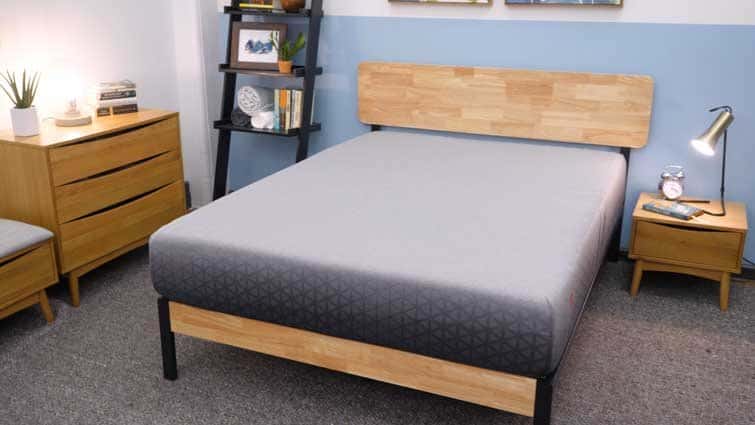
What is the Zoma Mattress Made of?
The Zoma is built with three layers of zoned memory foam, poly foam, and high-density poly foam. It’s a straightforward construction intended to be as pressure-relieving as it is supportive. The mattress also features some fun fabrications intended to amp up certain benefits for those athletic sleepers in the bunch.
To see how this all comes together, let’s take a peek under the cover!
Cover – The Zoma cover is made of a mesh-like material that’s pretty breathable, which could help hot sleepers snooze a little cooler at night.
Comfort – Below the cover, you’ll land on a layer of zoned Triangulex Foam™. In my opinion, this material is most similar to memory foam in that it has a slow response to pressure that allows the sleeper to sink in for targeted relief at the shoulders and hips. It’s a fairly thick section of the stuff, which could be an attractive feature for side sleepers to take note of.
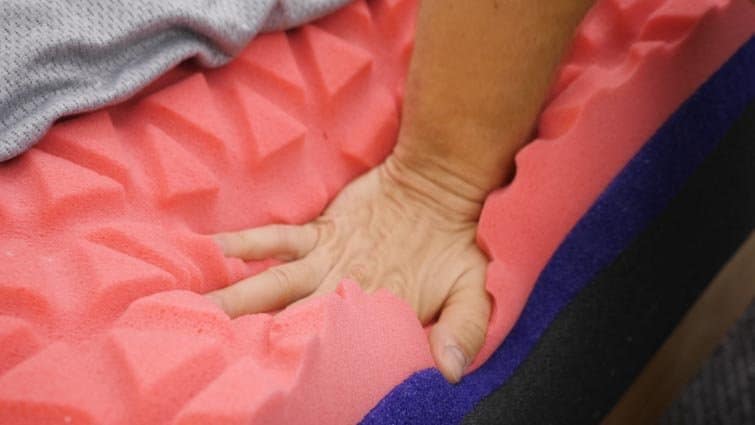
Transition – Up next lies a layer of the brand’s Reactiv Foam™. Like poly foam, this material has a quick response to pressure that should help curb some of the sinkage of the gentle foam above it.
Base – The base of the mattress is comprised of a thick layer of high-density poly foam. This section mainly functions to bring shape and stability to the overall structure, imbuing the bed with some foundational support.
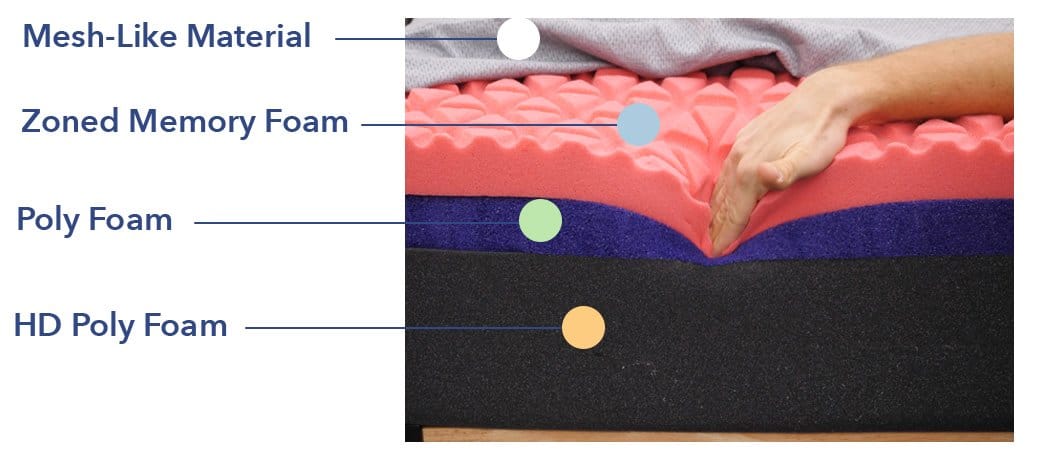
How Does the Zoma Sports Mattress Feel?
Now that we’ve taken a look at the construction specs, let’s see how these materials affect the bed’s feel, starting with firmness.
As with any feel factor, firmness is a subjective measure that can change a lot depending on one’s body size, shape, and weight. Therefore, my response to the mattress could be different from your own. For reference, I’m 5’10”, 190 lbs. and sleep primarily on my stomach.

After testing out the Zoma in multiple positions, I decided to give it a firmness rating of 5.5/10. When compared to the industry standard of 6.5 for medium firmness, it’s clear this mattress is quite soft.
If I’m being honest, I was kind of surprised by the softness. Though I was expecting to sink into the top section of memory foam, I assumed the subsequent layers of firm poly foam would curb this sinkage and lift my body up and out of the structure. However, this wasn’t totally the case, and I found I was positioned more “in” the bed than “on top” of it. This isn’t a bad vibe necessarily, but one that will probably work best for strict side sleepers in need of deep pressure relief at the shoulders and hips.

The Zoma has a soft memory foam feel that you'll sink into for great pressure relief. This bed was designed with athletes in mind and I think side sleepers will like it.
Testing the Zoma Sports Mattress
But firmness is hardly the only factor to consider when buying a new mattress! So, I thought it might be useful to run some tests for Pressure Relief and Motion Transfer.
Pressure Relief
I’ve touched on pressure relief a few times in this review already, but here we’re going to fully assess the Zoma’s capacity for alleviating tension in the shoulders, hips, and lower back. To do this, I’m going to use a pressure map.
Though it sounds complicated, it’s actually quite simple: I roll this gizmo out, hop aboard, and let the map do the rest! As I move around the structure, the gadget records the force my body’s exerting on the structure, and makes a colored “map” of the pressure. Blue indicates areas of low pressure and red indicates areas of high pressure.
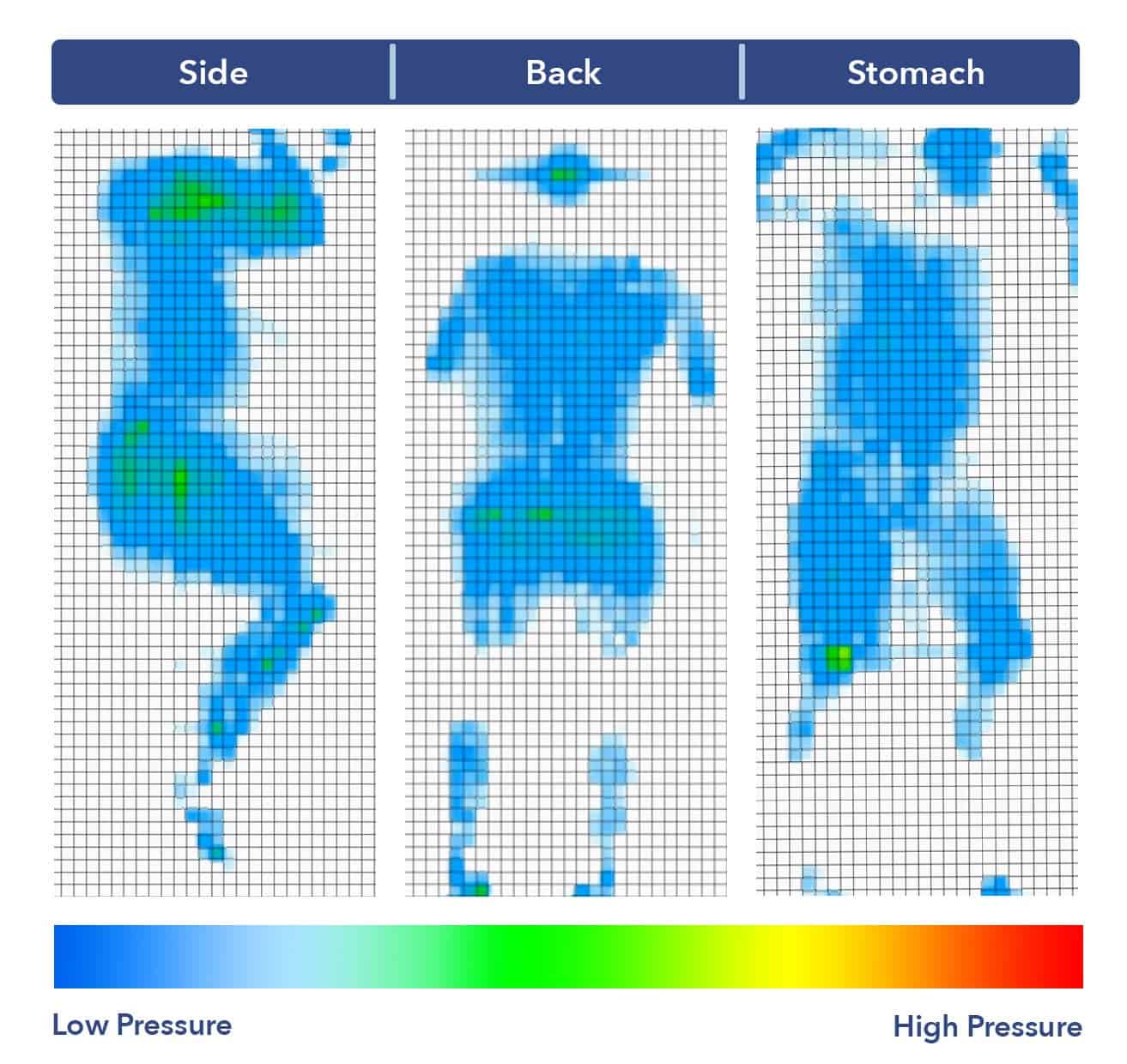
Back – Lying on my back, I felt as though my weight was evenly distributed across the structure. I could feel the memory foam filling in the space at my lumbar region, which provided some pretty satisfying pressure relief to my lower back. However, I did feel somewhat stuck in the bed, which made changing positions difficult. If you’re a combination sleeper you may want to check out our best mattresses for combination sleepers instead.
Side – When I turned onto my side, the pressure relief party really started. The top layer of memory foam cushioned my shoulders and hips as I sank into the bed, ensuring that they wouldn’t jam up too much in the night. If you’re a strict side sleeper, I’d definitely give the Zoma a look.
Stomach – However, this same comfort didn’t translate to stomach sleeping. The softness that makes this bed great for side sleepers makes it detrimental for those who sleep in prone, mostly because the gentle memory foam causes the hips to sink out of alignment with the shoulders. Strict stomach sleepers will likely want to go with a firmer structure.
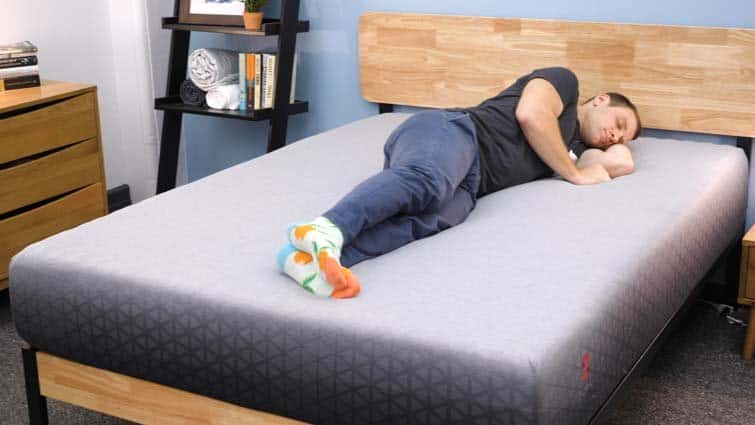
Motion Transfer
Next up, let’s talk motion transfer! This variable refers to the amount of movement detectable from one side of the mattress to the other, and could be a crucial factor for folks to consider if they share a bed with a child, partner, or rowdy pet.
To illustrate this motion transfer, I dropped a 10 lb. steel ball from heights of 4 inches, 8 inches and 12 inches and measured the disturbance it caused: the bigger the lines, the bigger the disturbance.
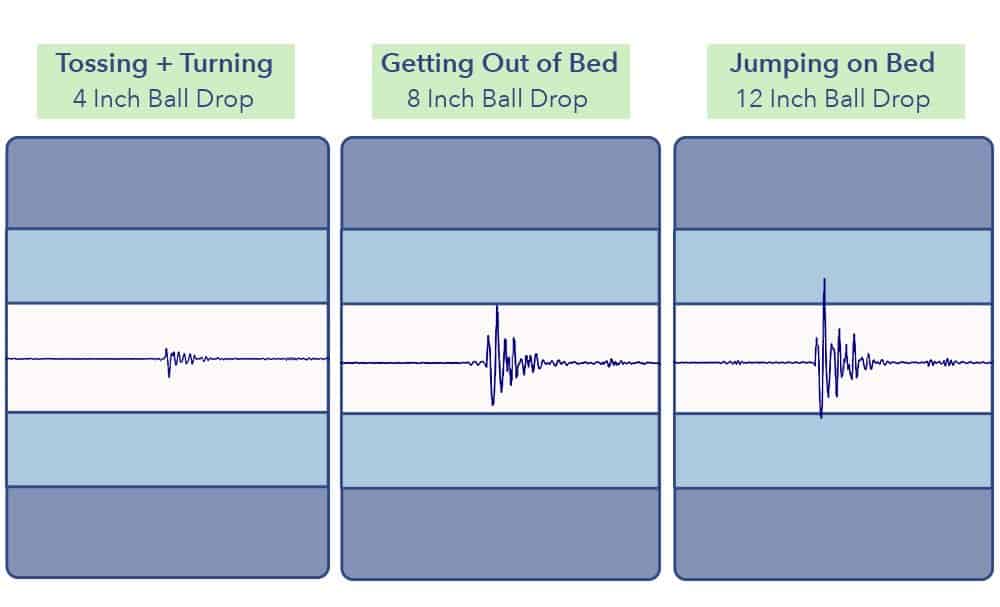
These are great motion transfer results! I’d attribute this mostly to the top layer of memory foam, which works to absorb and dampen movement across the structure. Given its performance on this test, I’d definitely recommend the Zoma for couples.
Should You Buy the Zoma Sports Mattress?
You did it! You made it to the end of the review! Now’s the time when we synthesize all the information we’ve gone over and answer the question you came here asking: Should you buy the Zoma mattress? To help you decide, let’s wrap up this baby with a few final pros and cons.

The Zoma has a soft memory foam feel that you'll sink into for great pressure relief. This bed was designed with athletes in mind and I think side sleepers will like it.
Zoma Mattress Recommendations
- First and foremost, I think this could be a great mattress for side sleepers. The plush memory foam provides plenty of pressure relief at the shoulders and hips, helping to alleviate tension in those sensitive spots.
- In general, the Zoma will work well for those who love memory foam! Though there’s some dense poly foam in the mix, the dominant vibe is one of sinkage and body-contouring.
- Another bonus of memory foam? It’s excellent at motion isolation, as it works to absorb and dampen movement across the structure. Couples, take notice!
Zoma Mattress Complaints
- Since the Zoma’s a fairly soft all-foam bed, I’m not sure I’d recommend it for stomach sleepers, who typically need pretty firm support at the hips and lower back.
- Additionally, there’s not a lot of bounce to this structure, so it may not be the best fit for those in need of optimized mobility. For a bouncier mattress check out our best innerspring mattresses.
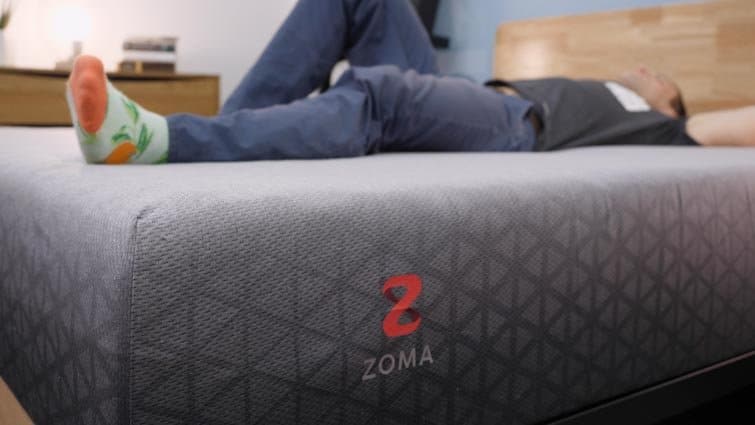
Company Policies
- Trial – 100 Nights
- Shipping – Free
- Warranty – 10 Years
How Much Does the Zoma Cost?

The Zoma has a soft memory foam feel that you'll sink into for great pressure relief. This bed was designed with athletes in mind and I think side sleepers will like it.
| Size | Dimensions | Price |
|---|---|---|
| Twin | 38″ x 74″ x 10″ | $649 |
| Twin XL | 38″ x 80″ x 10″ | $749 |
| Full | 54″ x 75″ x 10″ | $849 |
| Queen | 60″ x 80″ x 10″ | $949 |
| King | 76″ x 80″ x 10″ | $1,049 |
| Cali King | 72″ x 84″ x 10″ | $1,049 |
| Split King | 38″ x 80″ (x2) x 10″ | $1,348 |
Still deciding? Take a look at our mattress performance ratings for the Zoma mattress below.
Zoma Mattress
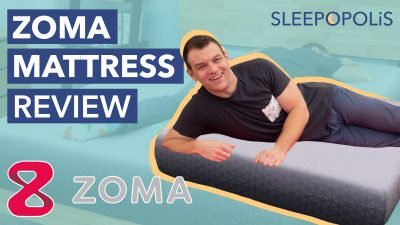
The Zoma has a soft memory foam feel that you'll sink into for great pressure relief. This bed was designed with athletes in mind and I think side sleepers will like it.
Product In-Stock: InStock
3.8
